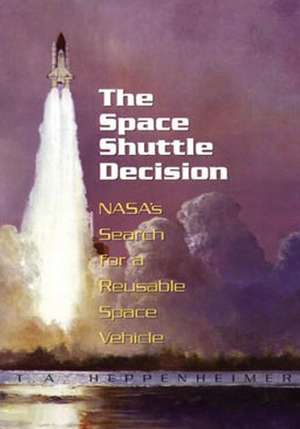The Space Shuttle Decision
Autor National Aeronautics and Administration, T. a. Heppenheimeren Limba Engleză Paperback
Preț: 155.72 lei
Nou
Puncte Express: 234
Preț estimativ în valută:
29.80€ • 31.07$ • 24.77£
29.80€ • 31.07$ • 24.77£
Carte disponibilă
Livrare economică 28 februarie-14 martie
Preluare comenzi: 021 569.72.76
Specificații
ISBN-13: 9781493766697
ISBN-10: 1493766694
Pagini: 492
Dimensiuni: 178 x 254 x 25 mm
Greutate: 0.84 kg
Editura: CREATESPACE
ISBN-10: 1493766694
Pagini: 492
Dimensiuni: 178 x 254 x 25 mm
Greutate: 0.84 kg
Editura: CREATESPACE
